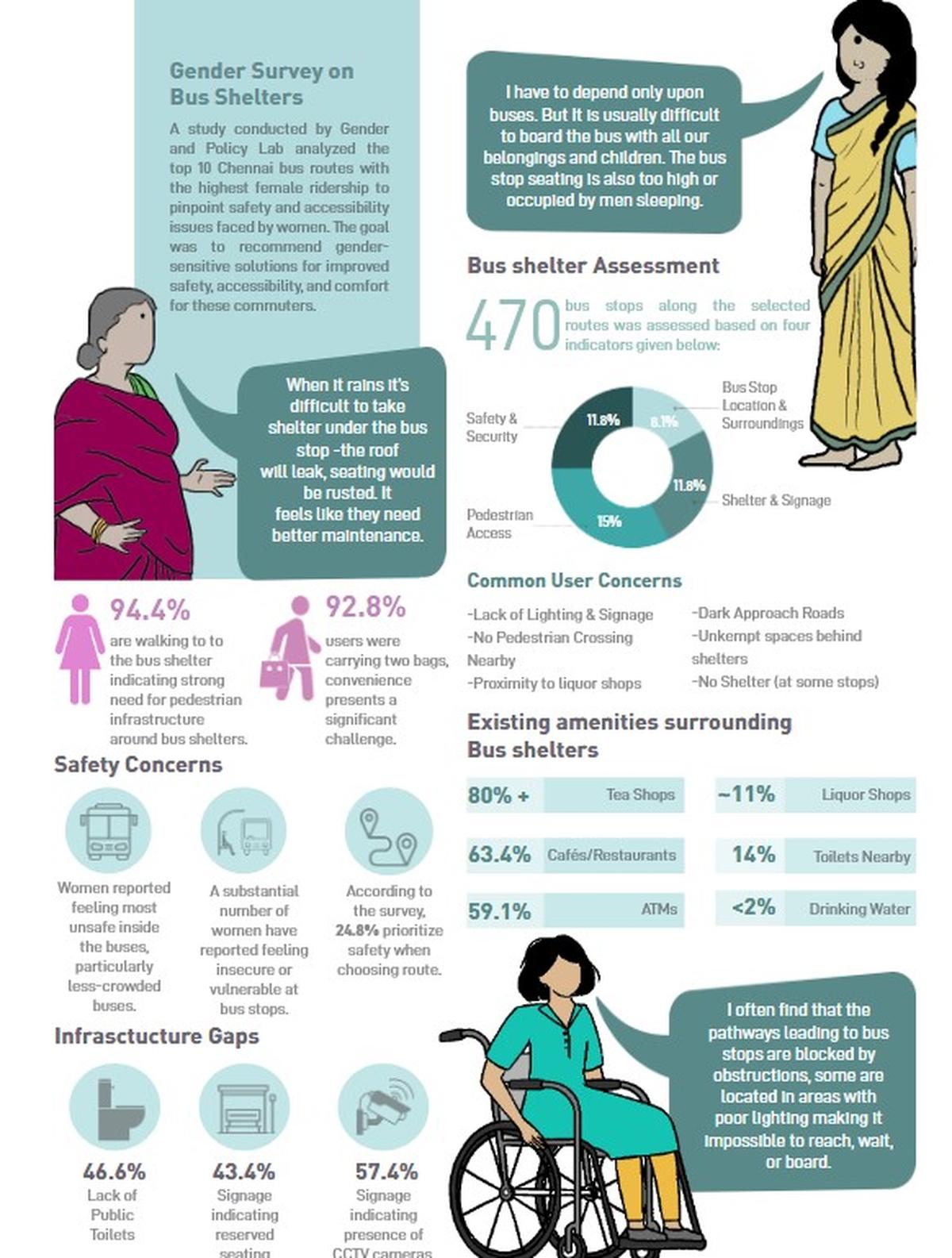
Mayor R. Priya unveiling the State’s first inclusive design manual curated by the GCC.
Across Chennai, many adjust their routines every day, avoiding dim streets, skipping a park visit, or simply staying home. This is not because they want to. It is because the city, by design, is not aligned to their needs.
As part of upgrading city amenities, the Greater Chennai Corporation (GCC) recently released the State’s first Inclusive Urban Design Manual. The document has data-driven guidelines, placing women, children, the elderly, persons with disabilities (PwDs), and gender-diverse people at the centre of urban infrastructure planning.
Kalaivani, who works as a nurse at a private hospital in Mettukuppam, said she preferred to cross the road at the traffic signal at night rather than use the nearby foot overbridge. “I would rather walk than use the bridge with people loitering around.”
Aiswarya Rao, founder of Better World Shelter for Women with Disabilities of Dorcas Research Centre, commended the initiative for addressing gender and accessibility concerns in urban planning. “This is the first time gender is being discussed meaningfully in relation to city spaces. Beach access ramps were set up in two areas, and plans are afoot for one on Thiruvanmiyur beach. Women-only gyms were also established,” she said.
However, she acknowledged that Chennai is still a difficult space for PwDs — public toilets remain largely inaccessible, and many roads, parks, and schools do not meet the basic accessibility standards. For instance, pointing to an audit conducted by the centre last year, she said, not a single GCC-run school was fully accessible to PwDs.
She also raised concerns about the installation of bollards on footpaths, which restricted wheelchair mobility.
D. Gnana Bharathi, a principal scientist at the Central Leather Research Institute who lives with a disability, said the flooring on the ramp at Chennai Central Station posed difficulties. “The surface is not smooth, and the height difference is around one centimetre. This is said to be installed with the intention of minimising skidding, but an anti-skid or rough-finished surface would have been a better alternative,” he said.
He added that the existing tile flooring could be particularly challenging for people with bone-related conditions, as a corrugated or uneven surface becomes difficult to navigate.

Illustration in the Greater Chennai Corporation ‘Inclusive Design Manual’ depicting the varying needs of women
Field audits covering youth, conservancy workers, women with disabilities, trans and non-binary persons, women traffic police, and more than 725 design evaluations were done to curate the manual.
This has ready-to-apply solutions — from guidelines on footpaths and location of toilets, to street lighting and signage — so that the public infrastructure is accessible for every one in the city. It also specifies certain norms for different public utilities.
In a note in the manual, Mayor R. Priya wrote: that change begins at home, and that parents must raise their girl children as equally as the boys and not discriminate. She also said people must understand that people must not judge women for their dress and attitude. “If a woman speaks loudly, it must be understood that it is her characteristic,” she said.“Our parks, playgrounds, streets, bus stops, shelters for homeless persons, and e-Sevai Maiyams are not just facilities — they are essential public services and lifelines. These spaces must serve everyone equally, irrespective of gender, age, ability, or economic background.”

Illustration in the Greater Chennai Corporation ‘Inclusive Design Manual’ depicting the status and requirements in the bus stops across the city
Published – June 10, 2025 12:44 am IST
Source:https://www.thehindu.com/news/cities/chennai/gccs-inclusive-design-manual-hopes-to-make-the-city-accessible-to-all/article69672299.ece

